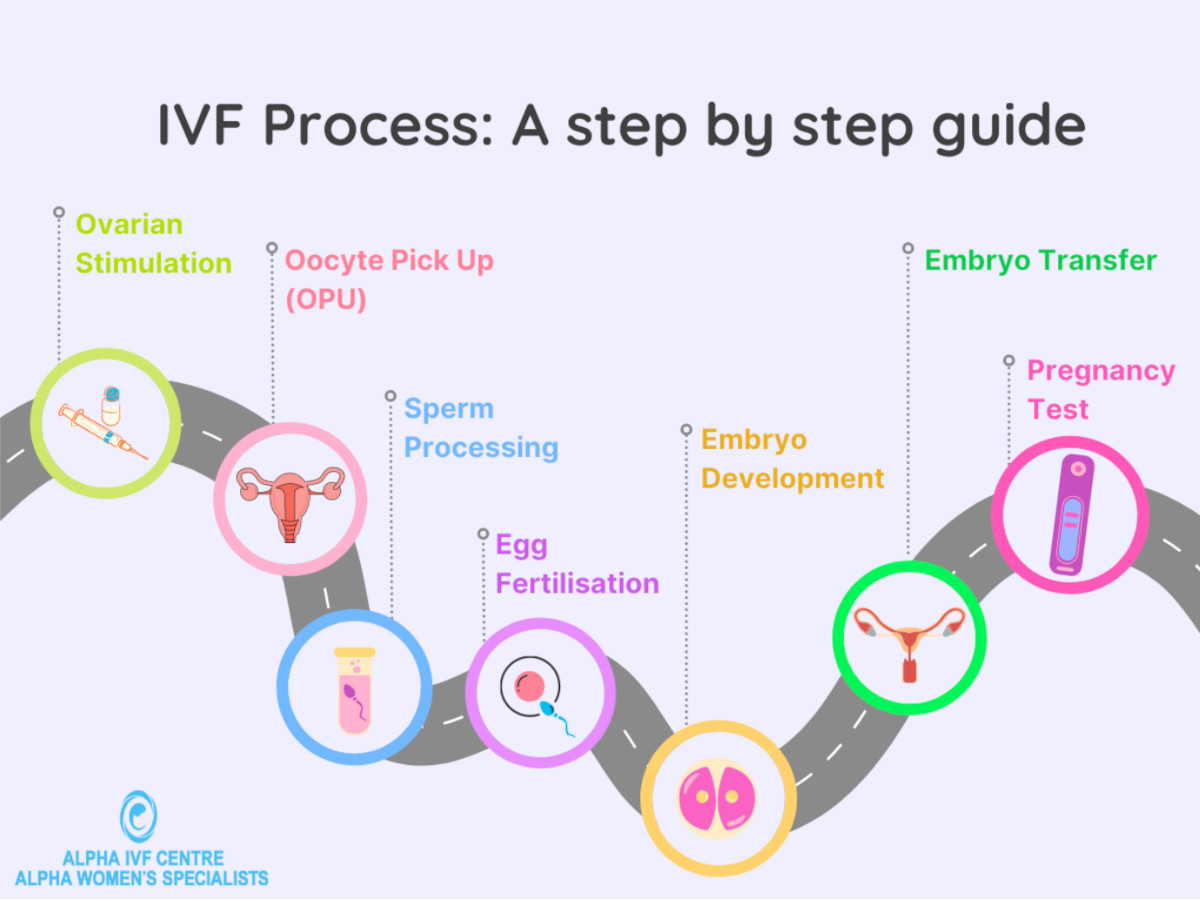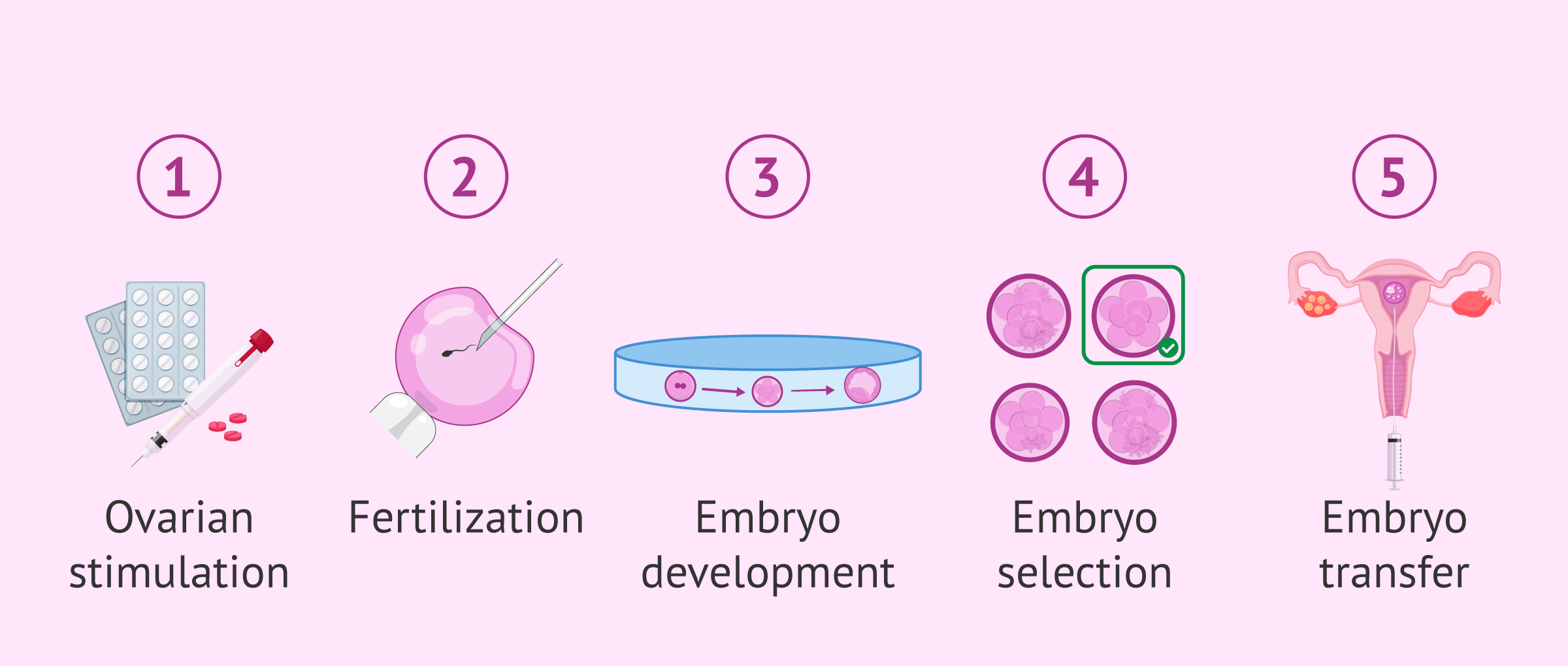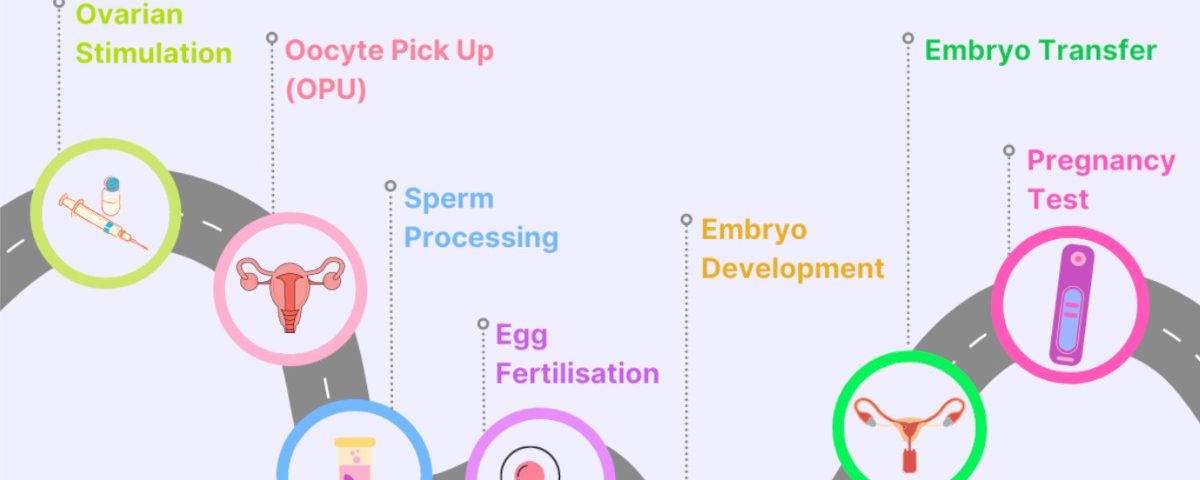
Your IVF Due Date: Everything You Need to Know About Calculating Your Baby’s Arrival
April 1, 2025ICSI IVF: Your Ultimate Guide to This Game-Changing Fertility Journey
Hey there! If you’re reading this, chances are you’re curious about ICSI IVF—maybe you’ve heard it tossed around in conversations about fertility treatments, or perhaps you’re exploring options to start or grow your family. Either way, you’re in the right place! Intracytoplasmic Sperm Injection (ICSI) combined with In Vitro Fertilization (IVF) is like the superhero duo of the fertility world, helping countless people overcome roadblocks to parenthood. But what’s it really like? How does it work? And why do some people swear by it while others wonder if it’s worth the hype?
In this deep-dive blog post, we’re peeling back the curtain on ICSI IVF. We’ll cover everything from the nitty-gritty science to the emotional rollercoaster, sprinkle in some surprising facts, and share practical tips you won’t find just anywhere. Whether you’re a newbie to fertility treatments or a seasoned pro looking for fresh insights, we’ve got you covered with a mix of relatable stories, cutting-edge research, and actionable advice—all written in a way that feels like a chat with a friend. Let’s dive in!
What Is ICSI IVF, Anyway?
ICSI IVF isn’t just a fancy acronym—it’s a powerful combo that’s been changing lives since the early 1990s. At its core, IVF is when doctors take eggs and sperm, mix them in a lab to create embryos, and then place those embryos into the uterus to (hopefully) kickstart a pregnancy. ICSI takes it a step further by injecting a single sperm directly into an egg, giving fertilization a major boost when things aren’t clicking naturally.
The Basics Made Simple
Picture this: in regular IVF, it’s like throwing a bunch of sperm into a petri dish with an egg and hoping one of them gets the job done—like a tiny dating game. With ICSI, though, it’s more like a matchmaker stepping in, picking the best sperm, and making sure it connects with the egg. This extra precision is why ICSI is a go-to for couples facing specific challenges, especially when sperm quality or quantity is an issue.
Why It’s a Big Deal
Here’s a fun fact: ICSI was first successfully used in 1992, and the first baby born from it was a total game-changer for fertility science. Since then, it’s helped millions of people worldwide become parents—pretty cool, right? But it’s not just about the tech; it’s about the hope it brings to people who thought their chances were slim.
Who Needs ICSI IVF? (Spoiler: It’s Not Just for Guys!)
You might think ICSI is only for men with low sperm counts, but there’s way more to the story. Let’s break it down and bust some myths while we’re at it.
Common Reasons People Choose ICSI IVF
- Male Fertility Struggles: Low sperm count, poor motility (sperm that swim like they’re lost), or weirdly shaped sperm (morphology issues) are the classics. ICSI can work miracles here by picking the healthiest sperm and giving it a direct shot at the egg.
- Past IVF Fails: If regular IVF didn’t lead to fertilized eggs, ICSI might step in to save the day.
- Frozen Eggs or Sperm: Freezing can toughen up eggs or slow down sperm, so ICSI helps bypass those hurdles.
- Unexplained Infertility: When doctors can’t figure out why pregnancy isn’t happening, ICSI can sometimes crack the case.
- Genetic Screening: If you’re doing preimplantation genetic testing (PGT) to check for inherited conditions, ICSI keeps extra sperm from hanging around and messing with the results.
Surprising Uses You Might Not Know
Here’s where it gets interesting: some clinics use ICSI even when there’s no obvious problem. Why? Because it cuts the risk of “total fertilization failure” (when no eggs fertilize at all) down to almost zero. Plus, for older women or those with fewer eggs, it might boost the odds of getting usable embryos. A 2019 study even suggested ICSI could help women over 35 get more top-quality embryos, though the jury’s still out on whether it always leads to more babies.
Real Talk: Is It Overused?
Okay, here’s a little secret the fertility world doesn’t always shout about: ICSI use has skyrocketed—like, from 36% of IVF cycles in 1996 to 76% in 2012 in the U.S. alone. Some experts wonder if it’s being recommended too often, especially when there’s no clear male issue. So, if your doctor suggests it, don’t be shy—ask why. It’s your journey, after all!
How Does ICSI IVF Work? A Step-by-Step Peek Behind the Scenes
Curious about what goes down in the lab? Let’s walk through the process like you’re shadowing a scientist for the day. It’s less sci-fi and more teamwork than you might think!
Step 1: Egg and Sperm Prep
- For Her: You’ll take hormone shots for about 10-14 days to rev up your ovaries and produce multiple eggs. Then, a quick procedure (under light sedation) retrieves those eggs.
- For Him: A sperm sample is collected—usually the old-fashioned way, but sometimes via surgery if sperm aren’t making it into the semen (think blockages or vasectomy aftermath).
Step 2: The ICSI Magic
In the lab, an embryologist uses a crazy-powerful microscope and a tiny needle (thinner than a hair!) to inject one sperm into each mature egg. It’s like a precision art project—seriously impressive stuff.
Step 3: Embryo Watch
The fertilized eggs (now embryos) chill in an incubator for 3-5 days. The team keeps an eye on them, picking the strongest ones for transfer. Fun fact: they’re graded like little report cards—think “A” for excellent quality!
Step 4: Transfer Time
One or two embryos are gently placed into the uterus using a thin tube. No anesthesia needed—just a quick, slightly awkward moment. Then, you wait about 10-14 days to see if they stick (aka implantation).
Step 5: The Big Reveal
A blood test checks for pregnancy. If it’s a yes, congrats—you’re on your way! If not, don’t lose hope; many folks need a few tries.
Insider Tip
Ever wonder what embryologists chat about while they work? Some say they play music in the lab to keep the vibes chill—imagine your future kid’s first “concert” being classical or soft rock!

Success Rates: What Are Your Odds with ICSI IVF?
Let’s talk numbers—but don’t worry, we’ll keep it real and relatable. Success isn’t guaranteed (ugh, if only!), but ICSI IVF has some solid stats worth knowing.
The Big Picture
ICSI fertilizes 50-80% of eggs it’s used on—way higher than regular IVF’s 50% average. But here’s the catch: fertilization is just the start. Pregnancy and live birth rates depend on tons of factors, like age and health. According to the UK’s Human Fertilization & Embryology Authority (HFEA), ICSI and regular IVF have pretty similar success rates overall—around 20-35% per cycle for women under 35.
Age Matters (A Lot)
- Under 35: You’ve got the best shot—up to 55% success per cycle, says 2020 CDC data.
- 35-37: Still solid, around 40%.
- 38-40: Drops to about 26%.
- Over 40: Around 8-20%, depending on egg quality.
Fresh vs. Frozen Embryos
Using fresh embryos? Success might edge up slightly. Frozen ones? Still great, especially with new freezing tech (vitrification) that’s made them almost as good as fresh. A 2021 study found frozen embryo transfers with ICSI had a 33% live birth rate for unexplained infertility—pretty close to fresh!
What Boosts Your Chances?
✔️ Healthy lifestyle: Think good food, sleep, and less stress.
✔️ Top-notch clinic: Lab quality really matters.
✔️ Timing: Starting younger helps big time.
❌ Smoking or excess booze: Nope, these tank your odds.
A Little Hope
One mom we’ll call Sarah (age 38) shared, “After two failed IVFs, ICSI gave us our twins. It wasn’t instant, but it felt like the universe finally said yes.” Stories like hers remind us: stats are just a starting point.
The Emotional Side: What Nobody Tells You About ICSI IVF
Fertility treatments aren’t just about science—they’re a wild ride for your heart and mind. Here’s the stuff you won’t find in a pamphlet.
The Highs
- That First Ultrasound: Seeing a heartbeat after all the waiting? Pure magic.
- Teamwork Vibes: You and your partner tackling this together can feel badass.
The Lows
- The Waiting Game: Those two weeks after transfer? Torture. Some folks binge Netflix; others stress-clean their whole house.
- When It Doesn’t Work: It’s crushing. One guy told us, “I felt like I failed her, even though I knew it wasn’t my fault.”
Unexpected Twists
Ever heard of “IVF envy”? It’s when you’re happy for your pregnant friend but secretly gutted it’s not you. Totally normal—and totally okay to feel. Or how about the random hobbies people pick up? One woman learned to knit during her cycles; now she’s got a baby and a scarf empire!
Coping Tips
- Talk It Out: A therapist or support group can be a lifeline.
- Little Wins: Celebrate every step—egg retrieval, embryo day, whatever.
- Self-Care: Bubble baths, walks, or blasting your favorite playlist—do you.

Risks and Downsides: Keeping It Real
ICSI IVF isn’t all sunshine and rainbows. Let’s unpack the not-so-fun parts so you’re in the know.
Possible Risks
- Birth Defects: Studies show a slight bump (1.5-3% vs. 1% in natural pregnancies), but it’s similar to regular IVF. Experts think it’s more about infertility itself than ICSI.
- Multiple Births: Twins or more can happen if multiple embryos are transferred—cute, but riskier for mom and babies.
- OHSS: Ovarian hyperstimulation syndrome (overactive ovaries from hormones) hits about 1-5% of cycles. It’s usually mild but can get serious.
Hidden Costs
It’s pricey—$12,000-$15,000 per cycle in the U.S., plus $3,000-$5,000 for ICSI. Insurance might not cover it, so people get creative—crowdfunding, second jobs, even selling stuff on eBay!
Expert Insight
Dr. Jane Frederick, a fertility specialist, once said, “ICSI is a tool, not a cure-all. It’s amazing for sperm issues, but it can’t fix everything.” That’s a reminder to keep expectations grounded.
ICSI IVF vs. Regular IVF: What’s the Difference?
Still fuzzy on why ICSI might beat out plain IVF? Let’s stack them up.
Head-to-Head Comparison
| Factor | Regular IVF | ICSI IVF |
|---|---|---|
| How It Works | Sperm + egg in a dish, natural fertilization | Sperm injected into egg |
| Best For | Female issues, mild male issues | Severe male issues, past fails |
| Fertilization Rate | Around 50% | 50-80% |
| Cost | Slightly cheaper | Extra $1,000-$5,000 |
| Risk of Failure | Higher if sperm struggles | Almost none |
When to Pick ICSI
Go for it if sperm’s the bottleneck or you’ve struck out with regular IVF. Skip it if everything’s normal—some research (like a 2021 Frontiers study) says it doesn’t boost live births for unexplained infertility and might even up cancellation rates.
Fun Analogy
Think of regular IVF as a free-for-all party—sperm and eggs mingle, hoping for sparks. ICSI? It’s a VIP event with a bouncer hand-picking the guest list.
Latest Research: What’s New in ICSI IVF?
Science doesn’t sleep, and neither does fertility research. Here’s what’s fresh off the press as of March 2025.
Cool Breakthroughs
- AI in Embryo Selection: Clinics are testing artificial intelligence to pick the best embryos—early results show up to a 10% success boost!
- Sperm Boosters: A 2024 study found antioxidants like CoQ10 might improve sperm quality pre-ICSI, giving embryos a head start.
- Freeze-All Trends: More folks are freezing all embryos and transferring later—data says it cuts OHSS risk and might up live birth rates by 5-7%.
Debates Heating Up
Some researchers argue ICSI’s overrated for non-male issues. A 2023 trial with 1,064 couples found no live birth edge over regular IVF when sperm was normal. Others say it’s still worth it for peace of mind—fewer “what ifs.”
Practical Tips: How to Rock Your ICSI IVF Journey
Ready to jump in? Here’s your playbook to maximize your shot and keep your sanity.
Before You Start
✔️ Pick the Right Clinic: Look for high success rates and good vibes—read reviews, visit in person.
✔️ Nutrition Hacks: Load up on leafy greens, berries, and nuts—studies link Mediterranean diets to better IVF outcomes.
✔️ Sperm Prep: Guys, cut back on junk food and tight undies 3 months out—sperm needs time to level up.
❌ Stress Overload: Don’t obsess over every detail; it won’t change the lab magic.
During the Cycle
- Stay Organized: Keep a calendar—shots, appointments, the works.
- Partner Up: Have your partner handle meds or cheer you on; it’s a team sport.
- Ask Questions: “Why ICSI?” “What’s my embryo grade?” Knowledge is power.
After Transfer
- Chill Out: Rest, but don’t become a couch potato—light walks are gold.
- Distraction Plan: Start a hobby (painting, gaming)—keeps the two-week wait from driving you nuts.
- Support Squad: Lean on friends or online forums—Reddit’s r/infertility is a treasure trove.
Bonus Hack
One couple swore by pineapple core (it’s got bromelain, which might help implantation). No hard proof, but it’s a tasty placebo!

Myths Busted: Clearing Up ICSI IVF Confusion
There’s a ton of noise out there—let’s set the record straight.
Myth #1: ICSI Guarantees a Baby
Nope! It nails fertilization, but implantation and pregnancy are still a roll of the dice.
Myth #2: It’s Only for Men
False! Women with egg issues or past flops benefit too—see the “Who Needs It” section.
Myth #3: ICSI Babies Are “Different”
Not true. A 2016 study on ICSI kids found no big developmental gaps—any quirks (like lower sperm count in boys) might just be inherited infertility, not the tech.
The Cost Factor: Breaking Down the Bucks
Money talks, and ICSI IVF isn’t cheap. Let’s crunch it.
Typical Breakdown
- Base IVF: $10,000-$15,000 per cycle.
- ICSI Add-On: $1,000-$5,000.
- Meds: $3,000-$7,000.
- Extras (PGT, freezing): $2,000-$5,000.
Saving Smart
- Insurance Check: Some states (like NY) mandate coverage—dig into your plan.
- Clinic Deals: Ask about multi-cycle discounts or refunds if it fails.
- Grants: Groups like BabyQuest offer fertility funding—worth a Google!
Real-Life Hack
One dad said, “We sold my old guitar collection on eBay—$2,000 closer to our kid!” Creative cash flow can work.
Stories from the Trenches: Real People, Real ICSI IVF
Nothing beats hearing it from folks who’ve been there. Here are two quick tales.
Mia’s Miracle
Mia, 34, and her husband faced male infertility—sperm count so low they nicknamed it “the lone ranger.” After one ICSI cycle, they got a daughter. “It was like winning the lottery,” she says.
Jake’s Journey
Jake, 41, went through three cycles. “The first two were brutal—nothing stuck. Third time, we switched clinics, and bam, our son arrived. Don’t give up too soon.”
Expert Q&A: Your Burning Questions Answered
We tapped Dr. Lisa Chen, a reproductive endocrinologist, for some insider scoop.
Q: Does ICSI hurt?
A: “The injection’s in the lab, not you! Egg retrieval’s the ouchy part, but sedation makes it a breeze.”
Q: Can ICSI fix bad eggs?
A: “It helps fertilization, but egg quality’s on you—age and health are key.”
What’s Next for ICSI IVF? The Future Looks Bright
Where’s this tech headed? Think sci-fi meets reality.
Predictions
- Gene Editing: CRISPR might one day tweak embryos pre-ICSI—ethical debates are already buzzing.
- Lab-Grown Eggs: Scientists are growing eggs from stem cells—could pair with ICSI down the road.
- Affordability: New tech might drop costs—fingers crossed!
Watch This Space
A 2025 conference hinted at “ICSI 2.0”—faster, smarter sperm selection. Stay tuned!
Your Turn: Let’s Chat!
Whew—that was a lot, right? Now we want to hear from you. What’s your biggest ICSI IVF question? Tried it and have a tip to share? Drop it in the comments below—we’re all ears! Oh, and if you loved this, share it with someone who needs a fertility friend. Let’s keep the convo going!
